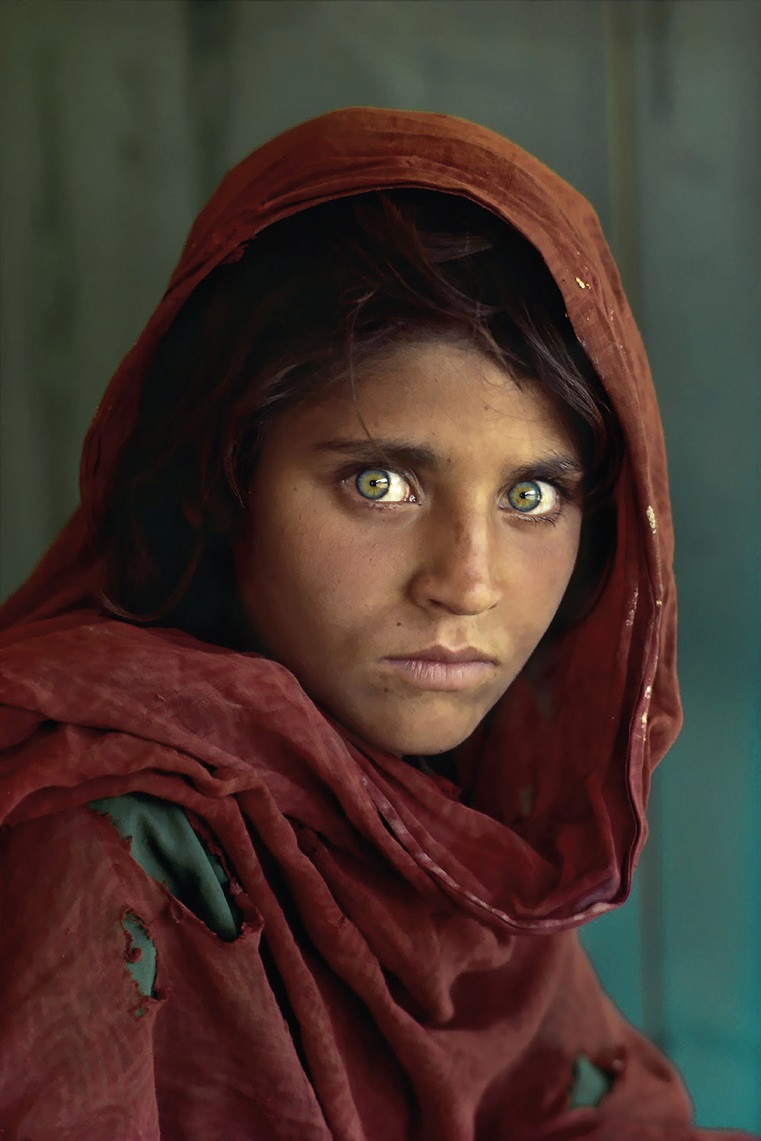A Life Revealed
She remembers the moment the photographer took her picture. The man was a stranger, but he asked if he could and she agreed to let him take it. She had never been photographed before and until they met a second time, seventeen years later, she was not photographed again.
The photographer, Steve McCurry, remembers the moment too. It was 1984 and he was recording the lives of Afghan refugees in a camp in Pakistan. She was staring out of the school tent and he admits thinking at the time that the picture would be nothing special. Yet the ‘Afghan girl’, as the portrait is now known, became one of the most iconic images of our time. McCurry used her intense expression, so untypical of an average, carefree twelve-year-old girl, to warn us not to ignore the victims of war, especially its young victims.
In 2002, National Geographic persuaded McCurry to return to Pakistan to look for the girl. After showing her photo around the refugee camp, he found a man who had known her as a child and knew where to find her. He offered to fetch her from her home in the Tora Bora Mountains and after three days returned with Sharbat Gula, a woman perhaps 29 years old. McCurry knew at once that this was her.
Time and the obstacles in life had erased her youth. Most strikingly, her skin was weathered. Yet her eyes still burned with the same intensity. Her brother explained the story of their lives, blaming the war for forcing them and many other Afghans out of their homeland. When Sharbat was six years old, they fled to the mountains, hiding in caves and begging people to give them food and blankets. She married when she was sixteen and now her time is occupied with bringing up her three children; cooking, cleaning and caring for them. Yet she does not complain about having a hard life. More amazingly, she is not aware of the impact that the photo of her young self with her sea-green eyes had on the world.”

